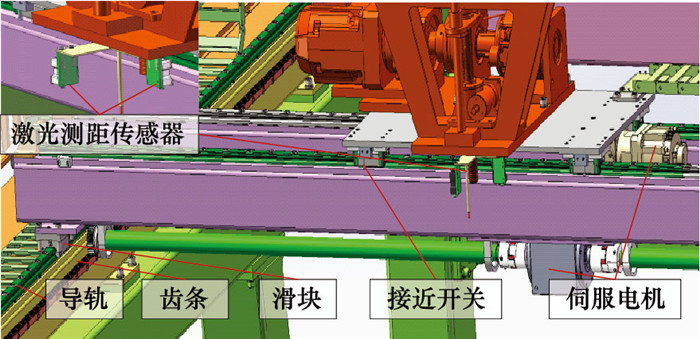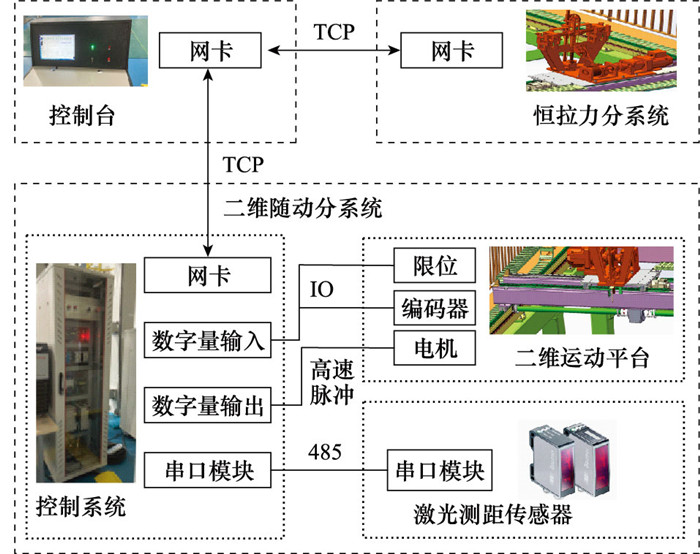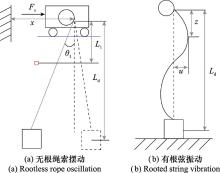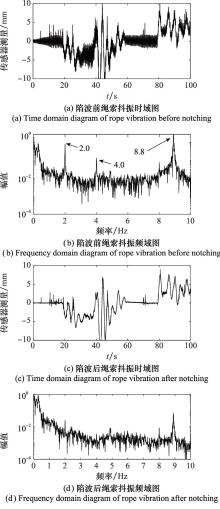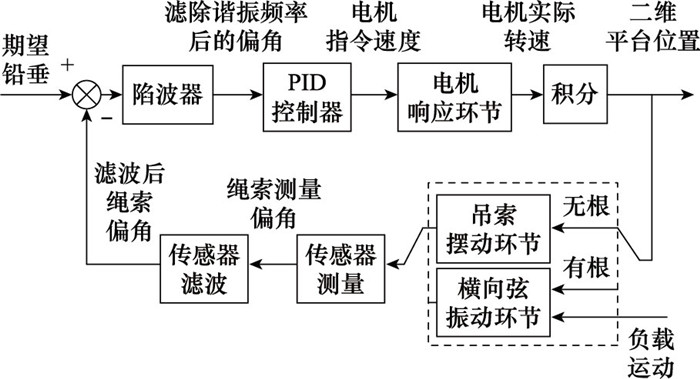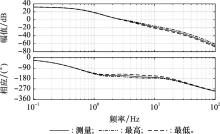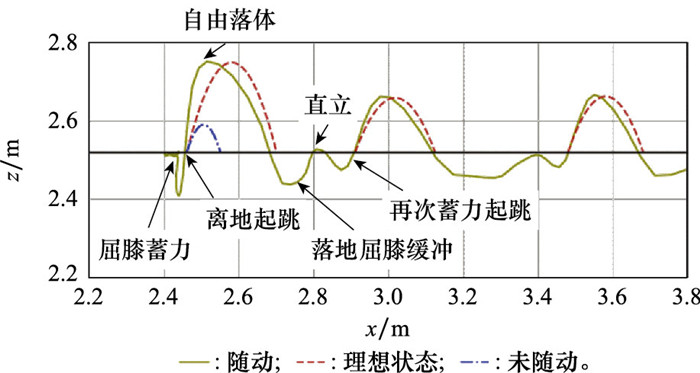Systems Engineering and Electronics ›› 2025, Vol. 47 ›› Issue (3): 929-937.doi: 10.12305/j.issn.1001-506X.2025.03.25
• Guidance, Navigation and Control • Previous Articles
Follow-up control technology and experiment research of suspension gravity compensation system
Xu WANG1, Yanfang LIU1,2,*, Jiayu SHE1, Qiufan YUAN3, Naiming QI1,2
- 1. School of Astronautics, Harbin Institute of Technology, Harbin 150001, China
2. Suzhou Research Institute, Harbin Institute of Technology, Suzhou 215104, China
3. Aerospace System Engineering Shanghai, Shanghai 201109, China
-
Received:2024-04-22Online:2025-03-28Published:2025-04-18 -
Contact:Yanfang LIU
CLC Number:
Cite this article
Xu WANG, Yanfang LIU, Jiayu SHE, Qiufan YUAN, Naiming QI. Follow-up control technology and experiment research of suspension gravity compensation system[J]. Systems Engineering and Electronics, 2025, 47(3): 929-937.
share this article
| 1 |
LI W J , CHENG D Y , LIU X G , et al. On-orbit service (OOS) of spacecraft: a review of engineering developments[J]. Progress in Aerospace Sciences, 2019, 108, 32- 120.
doi: 10.1016/j.paerosci.2019.01.004 |
| 2 |
YANG G , JI J , WEI Y H X . A collision-free visual servoing method for two space manipulators capturing tumbling satellites[J]. Proceedings of the Institution of Mechanical Engineers, Part C. Journal of Mechanical Engineering Science, 2024, 238 (6): 2251- 2266.
doi: 10.1177/09544062231190536 |
| 3 | GUDALL C, CABRIALES J, DUNBAR B J, et al. Finite element analysis (FEA) model of the Apollo A7LB extravehicular activity (EVA) suit sleeve[C]//Proc. of the IEEE Aerospace Conference, 2024. |
| 4 | HARVILL L, COWLEY M, RAJULU S. Human performance in simulated reduced gravity environments: JSCCN-32456[R]. Washington, D.C. : NASA, 2014. |
| 5 | HOFFMANN B. Human thermal analysis of traverse and geology tasks during simulated Lunar extravehicular activity[C]//Proc. of the IEEE Aerospace Conference, 2023. |
| 6 | ZHAO Z H, YIN Z, KANG Y, et al. The design and implementation of extravehicular experiments support system for manned spacecrafts[C]//Proc. of the 2nd International Symposium on Aerospace Engineering and Systems, 2023: 53-58. |
| 7 | STROMGREN C, LYNCH C, BURKE C, et al. Evaluating extravehicular activity access options for a Lunar surface habitat[C]//Proc. of the IEEE Aerospace Conference, 2023. |
| 8 |
CHEN C I , CHEN Y T , WU S C . Experiment and simulation in design of the board-level drop testing tower apparatus[J]. Experiment Techniques, 2012, 36 (2): 60- 69.
doi: 10.1111/j.1747-1567.2011.00755.x |
| 9 |
SAWADA H , UI K , MORI M . Micro-gravity experiment of a space robotic arm using parabolic flight[J]. Advanced Robotics, 2004, 18 (3): 247- 267.
doi: 10.1163/156855304322972431 |
| 10 | 姚燕生, 梅涛. 空间操作的地面模拟方法——水浮法[J]. 机械工程学报, 2008, 44 (3): 182- 188. |
| YAO Y S , MEI T . Simulation method of space operation on the ground-buoyancy method[J]. Journal of Mechanical Engineering, 2008, 44 (3): 182- 188. | |
| 11 | 刘延芳, 刘兴富, 齐乃明. 超低干扰力矩微纳卫星姿控半物理仿真平台[J]. 系统工程与电子技术, 2017, 39 (8): 1808- 1814. |
| LIU Y F , LIU X F , QI N M . Hardware-in-loop simulation platform with super-low disturbance torque for attitude control system of micro and nano-satellites[J]. Systems Engineering and Electronics, 2017, 39 (8): 1808- 1814. | |
| 12 | 高海波, 牛福亮, 刘振, 等. 悬吊式微低重力环境模拟技术研究现状与展望[J]. 航空学报, 2021, 42 (1): 80- 99. |
| GAO H B , NIU F L , LIU Z , et al. Suspended micro-low gravity environment simulation technology: status quo and prospect[J]. Acta Aeronautica et Astronautica Sinica, 2021, 42 (1): 80- 99. | |
| 13 | XIU W W, RUBLE K, MA O. A reduced-gravity simulator for physically simulating human walking in microgravity or reduced-gravity environment[C]//Proc. of the IEEE International Conference on Robotics and Automation, 2014: 4837-4843. |
| 14 | 宋天翔, 乔兵. 一种无源被动式人体低重力模拟系统的力学性能仿真分析[J]. 载人航天, 2023, 29 (5): 569- 580. |
| SONG T X , QIAO B . Kinematics simulation and analysis of a passive human body reduced-gravity simulation system[J]. Manned Spaceflight, 2023, 29 (5): 569- 580. | |
| 15 |
JIA J , JIA Y M , SUN S H . Preliminary design and development of an active suspension gravity compensation system for ground verification[J]. Mechanism and Machine Theory, 2018, 128, 492- 507.
doi: 10.1016/j.mechmachtheory.2018.06.018 |
| 16 |
HE J P , KRAM R , MCMACHON T A . Mechanics of sunning under simulated low gravity[J]. Journal of Applied Physiology, 1991, 71 (3): 863- 870.
doi: 10.1152/jappl.1991.71.3.863 |
| 17 | GRIFFIN T M , TOLANI N A , KRAM R . Walking in simulated reduced gravity: mechanical energy fluctuations and exchange[J]. Journal of Applied Physology, 1999, 86 (1): 383- 390. |
| 18 | LETKO W, SPADY A A. Walking in simulated lunnar gravity[C]// Proc. of the 4th Symposium on the Role of the Vestibular Organs in Space Exploration, 1970: 347-351. |
| 19 | PERUSEK G P, DEWITT J K, CAVANAGH P R. Zero-gravity locomotion simulators: New ground-based analogs for microgravity exercise simulation[EB/OL]. [2024-02-27]. https://ntrs.nasa.gov/citations/20080006841. |
| 20 | NORCROSS J R, CHAPPELL S P, CLLOWERS K G. Characterization of partial-gravity analog environments for extravehicular activity suit testing: NASA-TM-2020-216139[R]. Washington, D.C. : NASA, 2020. |
| 21 | 刘荣强, 郭宏伟, 邓宗全. 空间索杆铰接式伸展臂设计与试验研究[J]. 宇航学报, 2009, 30 (1): 315- 320. |
| LIU R Q , GUO H W , DENG Z Q . Space cable-strut deployable articutlated mast design and experiment study[J]. Journal of Astronauts, 2009, 30 (1): 315- 320. | |
| 22 |
YUAN F , CHEN D S , PAN C H , et al. Application of optimal-jerk trajectory planning in gait-balance training robot[J]. Chinese Journal of Mechanical Engineering, 2022, 35, 2.
doi: 10.1186/s10033-021-00665-1 |
| 23 |
KIM M G , CHO S , TRAN T Q . Scaled jump in gravity-reduced virtual environments[J]. IEEE Trans.on Visualization and Computer Graphics, 2017, 23 (4): 1360- 1368.
doi: 10.1109/TVCG.2017.2657139 |
| 24 |
YI W M , ZHENG Y , WANG W F , et al. Optimal design and force control of a nine-cable-driven parallel mechanism for lunar takeoff simulation[J]. Chinese Journal of Mechanical Engineering, 2019, 32, 73.
doi: 10.1186/s10033-019-0382-2 |
| 25 | HUAN S, DENG H. Research on gravity compensation technology for extravehicular activity training facilitiy[C]//Proc. of the 15th International Conference on Man-Machine-Environment System Engineering, 2015: 355-363. |
| 26 | 刘振, 高海波, 邓宗全. 星球车地面低重力模拟系统设计[J]. 机器人, 2013, 35 (6): 750- 756. |
| LIU Z , GAO H B , DENG Z Q . Design of the low gravity simulation system for planetary rovers[J]. Robot, 2013, 35 (6): 750- 756. | |
| 27 | VALLE P. Reduce gravity testing of robots (and humans) using active response gravity offload system: JSC-CN-40487[R]. Washington, D.C. : NASA, 2017. |
| 28 | SCHLOTMAN T E. A preliminary assessment of physical demand during simulated Lunar surface extravehicular activities[C]// Proc. of the IEEE Aerospace Conference, 2023. |
| 29 | YANG Z, SUN Y B, LEI Y Q, et al. Realization and experimental test of a body wright support unit for simultaneous position tracking and gravity offloading[C]// Proc. of IEEE the International Conference on Robotics and Biomimetics, 2016: 1064-1068. |
| 30 | 高扬. 悬吊法机水平随动控制系统设计[D]. 哈尔滨: 哈尔滨理工大学, 2017: 16-50. |
| GAO Y. Design of horizontal servo control system by suspension method[D]. Harbin: Harbin University of Science and Technology, 2017: 16-50. | |
| 31 | JIA J, JIA Y M, SUN S H. Adaptive sliding mode control for an active gravity offload system[C]//Proc. of the Chinese Intelligent Automation Conference, 2017: 461-569. |
| 32 |
SOPHIE O , JAMES C , JESSE R , et al. Effects of walking, running, and skipping under simulated reduced gravity using the NASA active response gravity offload system (ARGOS)[J]. Acta Astronautica, 2022, 197, 115- 125.
doi: 10.1016/j.actaastro.2022.05.014 |
| [1] | GUO Jian-guo1, CHEN Hui-juan1, ZHOU Jun1, JIANG Rui-min1, WANG Guo-qing2. Dynamics Modeling and characteristic analysis for vehicle with#br# asymmetric span morphing wing [J]. Systems Engineering and Electronics, 2016, 38(8): 1951-1957. |
| [2] | HUANG Xiang-dong, WANG Zhao-hua, LÜ Wei. Design of high-efficiency FRM notch filter with frequency point accurately controlled [J]. Journal of Systems Engineering and Electronics, 2009, 31(10): 2320-2322,2454. |
| Viewed | ||||||
|
Full text |
|
|||||
|
Abstract |
|
|||||



